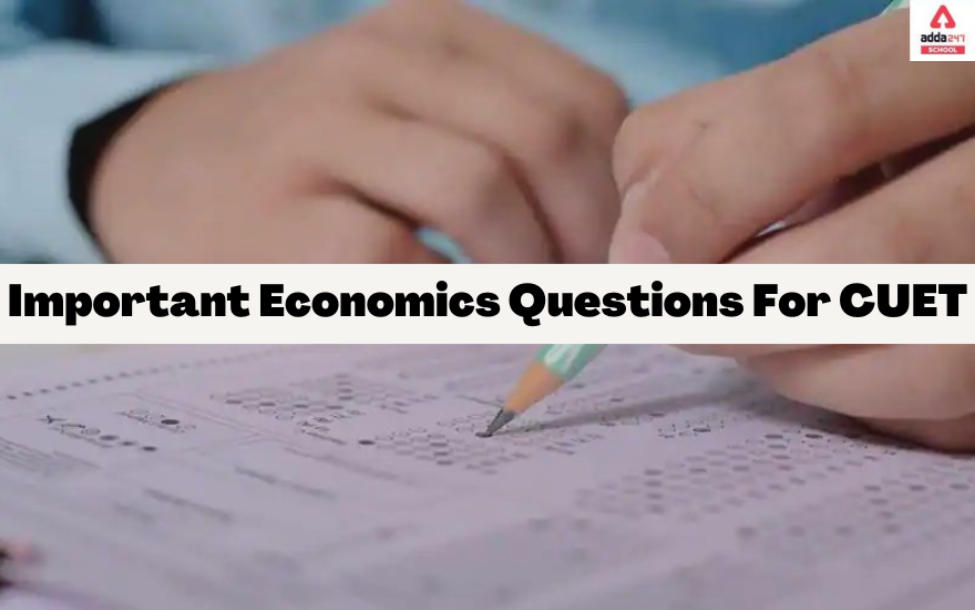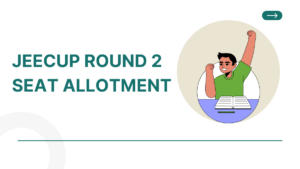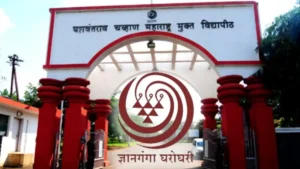Important Questions Of Economics For CUET
CUET Economics Important Questions: According to the National Test Agency, the CUET Exam 2022 will be held in July (NTA). CUET is divided into three sections: language tests, domain-specific tests, and general tests. Only domain-specific courses are included in Section 2 of the CUET exam. Economics is included in this section. So, today we will cover economics subject. Here we will provide you with a list of CUET important questions for Economics.
CUET Economics Unit Wise Syllabus
The CUET Economics Syllabus is divided into two large parts. Among these two parts, each section has multiple sub-sections that are practically equally important in the article. Introduction to macroeconomics and Indian economic growth are the topics. All of the components are interconnected in some fashion. To understand these concepts thoroughly and efficiently, a student should study each of them in the CUET economics course. Each of these areas should be given the same amount of attention and effort by the candidate.
| Unit | Topic |
| Unit I: Introduction to Microeconomics | • What is microeconomics? • Central problems |
| Unit II: Consumer Behaviour and Demand | • Consumer’s Equilibrium: meaning and attainment of equilibrium through Utility Approach: One and two commodity cases. • Demand: market demand, determinants of demand, demand schedule, demand curve, movement along and shifts in the demand curve, price elasticity of demand, measurement of price elasticity of demand – percentage, total expenditure, and geometric methods |
| Introductory Macroeconomics | |
| Unit III: National Income and Related Aggregates — Basic Concepts and Measurement | Macroeconomics: meaning. • Circular flow of income, concepts of GDP, GNP, NDP, NNP (at market price and factor cost). • Measurement of National Income –Value Added method, Income method, and Expenditure method. |
| Unit IV: Determination of Income and Employment | |
| Unit V: Money and Banking | |
| Unit VI: Government Budget and the Economy | |
| Unit VII: Balance of Payments | • Foreign exchange rate – meaning (fixed and flexible), merits and demerits; determination through demand and supply • Balance of payments accounts – meaning and components • A brief analysis of recent exchange rate issues |
| Indian Economic Development | |
| Unit VIII: Development Experience (1947-90) and Economic Reforms since 1991 | |
| Unit IX: Current challenges facing the Indian Economy | Poverty – absolute and relative; Main programs for poverty alleviation: A critical assessment; Human Capital Formation – How many people become resource; Role of human capital in economic development; Rural development: Key issues – credit and marketing – the role of cooperatives; agricultural diversification; Employment: Growth and changes in the workforce participation rate in formal and informal sectors; problems and policies Infrastructure: Meaning and Types: Cases Studies: Health: Problems and Policies – A critical assessment; Sustainable Economic Development: Meaning, Effects of Economic Development on Resources and Environment, including global warming |
| Unit X: Development Experience in India | A comparison with neighbors · India and Pakistan · India and China · Issues: economic growth, population, sectoral development, and other Human Development Indicators |
Asked Important Economics Questions For CUET
Q1. What is the shape of the Keynes Aggregate Supply before the level of full employment is attained?
(a) Perfectly inelastic
(b) Perfectly elastic
(c) Unitary elastic
(d) More elastic
Q2. What is a fiscal measure of correcting deficient demand?
(a) Increase in public expenditure and decrease in taxes
(b) Decrease in public debt
(c) Deficit financing
(d) All of these
Q3. What will be APC when APS = 0?
(a) 1
(b) 0
(c) 2
(d) Infinite
Q4. If the income is ₹ 400 crores and consumption is ₹ 250 crores, what will be the APC?
(a) 0.67
(b) 0.63
(c) 0.60
(d) 0.58
Q5. If for a country net factor income from abroad is negative then:
(a) GDP < GNP
(b) GDP > GNP
(c) GDP ≥ GNP
(d) GDP = GNP
Q6. Which is the measure of correcting excess demand?
(a) Deficit financing
(b) Reduction in taxes
(c) Increase in public expenditure
(d) Increase in public debt
Q7. The market value of all final goods and services produced in an economy over a year is called:
(a) Gross National Product
(b) National Income
(c) Gross Domestic Product
(d) Net National Product
Q8. Which of the following is correct?
(a) Disposable Income = Personal Income – Direct Taxes
(b) Disposable Income = Private Income – Direct Taxes
(c) Disposable Income = Personal Income – Indirect Taxes
(d) Disposable Income = Private Income – Indirect Taxes
Q9. Which service is included in Tertiary Sector?
(a) Mining
(b) Construction
(c) Communication
(d) Animal Husbandry
Q10. What is the consumption of fixed capital called?
(a) Capital formation
(b) Depreciation
(c) Investment
(d) All of these
Q11. For a four sectors or open economy the condition for equilibrium is:
(a) Savings + taxes + Imports = Investment + got, expenditure + exports
(b) Total Leakages = Total Injections
(c) Aggregate output = Aggregate Expenditure
(d) All of these
Q12. Net National Income at Factor Cost is called?
(a) National Income
(b) Gross Investment
(c) Domestic Income
(d) None of these
Q13. The market price of all final goods of a country in a year is known as:
(a) GDPMP
(b) GDPFC
(c) NNPFC
(d) None of these
Q14. Which one is included in the four-sector model?
(a) Family, Firm, Industry
(b) Family, Firm, Government
(c) Family, Firm, Government, Foreign Sector
(d) None of the above
Q15. What are the advantages of Barter System?
(a) Simple System
(b) More Mutual Co-operation
(c) No Economic Disparities
(d) All the above
Q16. Which one is included in the three-sector model?
(a) Family
(b) Firm
(c) Government
(d) All of these
Q17. What are the necessary conditions of Barter System?
(a) Limited Needs
(b) Limited Exchange Area
(c) Economically Backward Society
(d) All the above
Q18. “Money is a pivot around which the whole economy clusters.” Who said it?
(a) Keynes
(b) Robertson
(c) Marshall
(d) Hawtrey
Q19. Which is the correct order of money evolution?
(a) Commodity Money, Paper Money, Metal Money
(b) Commodity Money, Metal Money, Paper Money, Credit Money
(c) Credit Money, Metal Money, Paper Money
(d) None of the above
Q20. The Tata Iron and Steel Company (TISCO) were incorporated in:
(a) 1807
(b) 1870
(c) 1907
(d) 1970
Q21. “Money is what money does.” Who said it?
(a) Hartley Withers
(b) Hawtrey
(c) Thomas
(d) Keynes
Q22. Which of the following are ‘land tenure systems?
(a) Zamindari system
(b) Mahalwari system
(c) Rotwari system
(d) All of the above
Q23. What is ‘per capital income’?
(a) Gross income
(b) Net income
(c) Average income
(d) None of the above
Q24. When was the planning commission set up?
(a) 1949
(b) 1950
(c) 1956
(d) 1850
Q25. One of the following was high during the British rule over India:
(a) Literacy rate
(b) Female literacy rate
(c) Infant mortality rate
(d) Life expectancy
Q26. Whose estimate of national income was considered very significant?
(a) Debadhai Naroji
(b) William Digby
(c) RC Desai
(d) VKRV Rao
Q27. The Industrial policy which worked till 1990 was adopted in:
(a) 1948
(b) 1951
(c) 1956
(d) 1961
Q28. The licensing policy aimed at:
(a) Promoting regional equality
(b) Check undue expansion of industrial sector
(c) Both a) and b)
(d) None of the above
Q29. The first five year plan was launched for a period from _
(a) 1948 – 1953
(b) 1959 – 1954
(c) 1951 – 1956
(d) 1955 – 1960
Q30. Agriculture sector contributed _ percent to the GDP in 1990-91.
(a) 24.6
(b) 34.9
(c) 40.5
(d) 59.0
Q31. What is the investment limit in small scale industries?
(a) 50 lakh
(b) 1 core
(c) 25 lakh
(d) 75 core
Q32. Which of the following refers to relaxation of previous government restrictions?
(a) Privatization
(b) Globalization
(c) Disinvestment
(d) Liberalization
Q33. WTO was established in the year____
(a) 1995
(b) 1948
(c) 1996
(d) 1994
Q34. In the year ___________ Indian Government made free and compulsory education for age group of 6 – 14 years.
(a) 2001
(b) 2009
(c) 2003
(d) 2007
Q35. When was VAT introduced in most of the States of India?
(a) 1995
(b) 2001
(c) 2005
(d) 2006
Q36. Which organization collects data on poverty in India?
(a) NSSO
(b) SJSRY
(c) MGNERGA
(d) None of these
Q37. The expenditure by the government on education is expressed as:
(a) Percentage of total government expenditure
(b) Percentage of GDP
(c) Percentage of National Income
(d) Both a) nor b)
Q38. Estimation of Poverty in rural economies is at per day consumption of calories:
(a) Less than 2200
(b) Less than 2100
(c) Less than 2400
(d) Less than 2000
Q39. In India, which of the following organizations regulates the health sector?
(a) ICMR
(b) UGC
(c) AICTE
(d) None of these
Q40. Which one of the following is an indicator of educational achievement in a country?
(a) Youth Literacy Rate
(b) Adult Literacy Rate
(c) Primary Completion Rate
(d) All of these










 DTE Maharashtra Polytechnic Merit List 2...
DTE Maharashtra Polytechnic Merit List 2...
 JEECUP Round 2 Seat Allotment Result 202...
JEECUP Round 2 Seat Allotment Result 202...
 YCMOU Result 2025 Out @ycmou.digitaluniv...
YCMOU Result 2025 Out @ycmou.digitaluniv...


